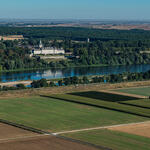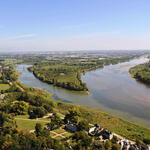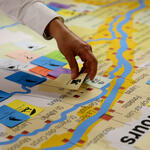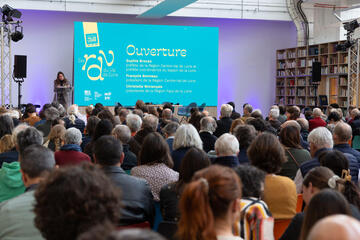How can an OUV assessment be carried out, ensuring that the conditions are shared by everyone? How can a strategy be defined in which maintenance or enhancement of the OUV helps to shape the future region?
Under the Convention concerning the Protection of the World Cultural and Natural Heritage, States must endeavour to protect their heritage and a list is established of properties of outstanding universal value. Operational Guidelines for the Implementation of the World Heritage Convention set forth the procedures for managing the Properties, which are defined and updated at regular intervals by the World Heritage Committee, consisting of representatives of the States Parties to the Convention.
To ensure proper management of each Property, there are key principles to apply:
The fundamental Unesco principles
- Consideration of the OUV: "Protection and management of World Heritage properties should ensure that the outstanding universal value, the conditions of integrity and/or authenticity at the time of inscription are maintained or enhanced in the future" (Article 96);
- Development and implementation of a Management Plan for each nominated Property (Articles 108 to 110);
- Requirement for States Parties to inform the World Heritage Committee oftheir "intention to undertake or to authorize in an area protected under the Convention major restorations or new constructions which may affect the outstanding universal value of the property (Article 172).
- Performance of an impact study each time "exceptional circumstances occur or work is undertaken which may have an effect on the state of conservation of the property" (Article 169).
Regular assessments of the state of conservation of Properties shall give rise to Periodic Reports (Articles 199 – 202).
How can an OUV assessment be carried out, ensuring that the conditions are shared by everyone? Over and above an essential inventory of heritage sites and landscapes, the purpose is to characterise the heritage to be transmitted by examining what this transmission means and developing a corpus of knowledge for it under jointly recognised conditions.
How can a strategy be defined in which maintenance or enhancement of the OUV helps to shape the future region? How does the “World Heritage resource” contribute to development and how is the defined strategy fully conveyed in the project governance and rules?
Also in this section
- Act
- Guide pratique - Val de Loire patrimoine mondial et aménagement du territoire
The assessment
All of the partner procedures began with an assessment of the OUV at the scale of the action undertaken. Three methodological points are identified following trials.
- Act
- Guide pratique - Val de Loire patrimoine mondial et aménagement du territoire
The key criteria underpinning OUV
Below is a detailed list of the OUV component parts potentially present in a Loire Valley area.
- Act
- Guide pratique - Val de Loire patrimoine mondial et aménagement du territoire
Protecting symbolic sites
Since 2005, the State has been conducting a policy to protect the most symbolic sites in light of the Unesco inscription criteria, combining two complementary procedures: listed sites and areas for enhancing architecture and heritage (AVAP), which became remarkable heritage sites (SPR) under the Act of 7 July 2016 on creative freedom, architecture and heritage.
- Act
- Guide pratique - Val de Loire patrimoine mondial et aménagement du territoire
The heritage development strategy
Strategies defined in the context of the SCoT, PLU and PLUi partner plans have been designed with four key priorities in mind.
- Act
- Guide pratique - Val de Loire patrimoine mondial et aménagement du territoire
Project design
Design relies on an understanding of the character of the place and the compositional rules set forth in the OUV analysis: alignment with the fundamental heritage and landscape features of the site at their multiple scales, integration of the specific aspects regarding topography, plot (location), architectural typology, expression of forms, volumes and materials.
- Act
- Guide pratique - Val de Loire patrimoine mondial et aménagement du territoire
Participation of residents
Undertaking a participatory approach means recognising that residents and users can perceive the same area, the same landscapes and architectures in different ways depending on their expectations, culture and personal experience – and that these all need to be heeded. It means bearing in mind the local knowledge held by residents, which experts are not necessarily in possession of.










![Nouvelles Renaissance(s] 2023](/var/storage/images/val-de-loire-refonte/dossier-de-parametrage/pied-de-page/nouvelles-renaissance-s-2023/517479-13-fre-FR/Nouvelles-Renaissance-s-2023_image_largeur220.png)


 Lettre d'information
Lettre d'information
 Facebook
Facebook
 Flickr
Flickr
 Podcloud
Podcloud
 Dailymotion
Dailymotion
 Box
Box
 Slideshare
Slideshare
 Diigo
Diigo

